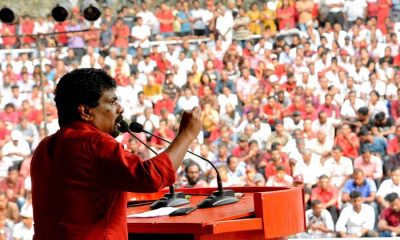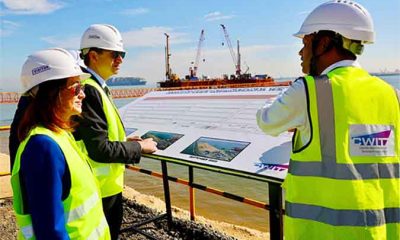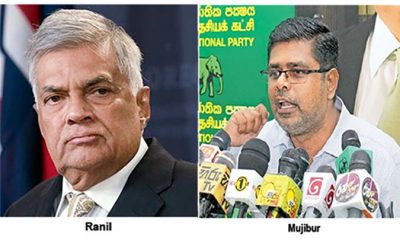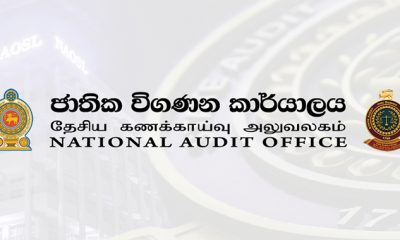Business
Only 0. 04% of SL’s land parcel allocated for Industrial Zones: Minister
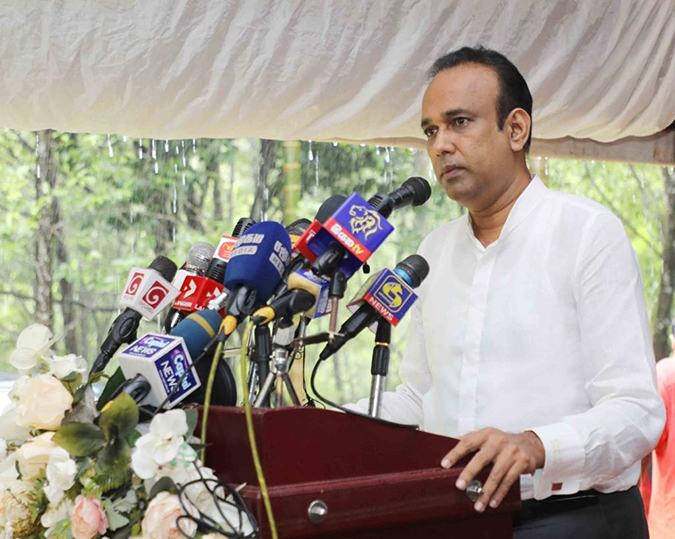
‘Productivity of land utilized for agriculture and plantations very low’
by Sanath Nanayakkare
Industrial Zones that account for 30% of local GDP have received only 0.04 % of the country’s land parcel, while millions of hectares of land utilized by the traditional agriculture and plantation sectors account for only 8% of the GDP because the two industries are lagging behind in their value- addition processes, Minister of Plantation Industries and Minister of Industries Dr. Ramesh Pathirana said on Monday.
Pathirana made these remarks while presenting the keynote speech at Nebada Sadaharitha Estate in the Kalutara district, where the Sadaharitha Group, a leader in the Sri Lankan green commercial forestry sector, marked its 21st anniversary.
Speaking further the Minister said:
“Our plantations industry dates back to more than a century and our agriculture industry is even more ancient. Approximately 4 million of our people directly depend on agriculture. In the past 75 years, we have benefited from these two sectors. A good example for this is in 1952, Sri Lanka and China entered into a rubber-rice pact when the country had to face a shortage of rice and China wanted rubber from Sri Lanka. In 1952, Sri Lanka’s population was 6.3 million. Today the population has increased to about 22 million and enough rice is produced for the nation without an issue.
This is because of the substantial investments we have made in water reservoirs, irrigation systems, seeds distribution and fertilizer subsidies. Tea and rubber also get re-planting subsidies. Cinnamon growers get plants for free. However, the country’s agriculture sector accounts for only 8% of the GDP. So, although millions of hectares of the nation’s land are utilized by the agricultural and plantations industries, there is a clear lack of productivity generated by the nation’s land resource by the traditional agriculture sector. This difference becomes clear to us when we work with the agricultural sector and the industrial sector. There is as little as 0.04% of land allocated for industrial zones of the country and they account for 30% of the GDP.”
“During the recent economic crisis, we realized that although the agriculture industry is good and the plantations industry is also good, they are more prone to dependency and their export-oriented value addition processes are on a back-foot relative to other countries in the world.”
“Our commercial tea industry is as old as 150 years since James Taylor, the Scottish planter, who discovered Sri Lanka had great potential for tea. Ceylon tea brand still fetches the best price in the world vis a vis Kenya and India. But our value addition and brand building fronts are in a very backward position. Our value addition is 40% including the production of 5-kilo bags which is also considered as a value addition.
Traditional tea exporters are not willing to shift from their models. They have historically exported tea to Turkey, Iran, Iraq, Lybia, Syria etc. The trade volume accounts for USD 1.2 billion. We need to be thankful to them for their hard work. In terms of rubber, we have become a centre for producing rigid tyre which generates an income of USD 1 billion. But the productivity in our rubber plantations has declined as tappers tend to exit the industry because of weather conditions.
On the coconut front, there is an increasingly favourable situation for Sri Lanka because there is increasing global demand for coconut and allied products. In 2022, we were able to record an income of USD 836 million from coconut exports. I believe that we will be able to earn USD 2 billion from the coconut and allied product exports in 5 to 7 years. Last year, cinnamon industry earned us USD 300 million. But, with Sri Lanka receiving its first ever Geographical Indication (GI) certification for Ceylon Cinnamon, we shall be able to expand our cinnamon exports in the future.”
“In this context, we need to draw our attention towards other commercial crops which have a demand in the global market including the Agarwood cultivation which Sadaharitha has developed a notable footprint across Sri Lanka in cultivation and has also secured a place for their products in the export market. Further, we have instructed the EDB to promote our coffee exports as global coffee sales volume is as five times as tea. The Malaysian Ambassador in Sri Lanka recently drew my attention to commercial cultivation of Durian fruit and we are looking at the possibility of growing it in rubber plantations where rubber trees are sparse. Further, we are looking at the possibility of expanding our export of fresh fruits to the EU, Australia and New Zealand in addition to the Maldives and the Middle East. For this, we are now in the process of earning international certifications to enter those markets.”
Business
HNB Finance bags 2 CMA Reporting Awards 2025

HNB Finance PLC has been honoured with two prestigious accolades at the CMA Excellence in Integrated Reporting Awards 2025, reaffirming the company’s commitment to transparency, good governance, and integrated business performance.
At this year’s ceremony, HNB Finance PLC was awarded Second Runner Up – joint in the category of “Best Integrated Report , Finance and Leasing Sector”, and also received a Merit Award in recognition of its continued efforts to enhance reporting quality and strengthen stakeholder communication.
The CMA Excellence in Integrated Reporting Awards, organised annually by the Institute of Certified Management Accountants (CMA) of Sri Lanka, acknowledge organisations that demonstrate superior financial reporting standards aligned with global best practices. Winners are assessed on key criteria such as financial performance and strategic management, corporate governance and compliance, innovation and digital transformation, sustainability practices, and professional excellence.
Chaminda Prabhath, Managing Director/CEO of HNB Finance PLC, commented on the recognition, “These awards reaffirm our commitment to upholding the highest standards of integrated reporting and transparent financial disclosure. At HNB Finance, we remain focused on delivering sustainable long-term value through robust governance frameworks, prudent financial management, and continuous innovation. The acknowledgement by CMA Sri Lanka reflects the disciplined efforts of our teams across the organization and motivates us to further enhance our reporting quality, strengthen ESG integration, and reinforce our stakeholder centric approach.”
Business
ComBank joins ‘Liya Shakthi’ scheme to further empower women-led enterprises
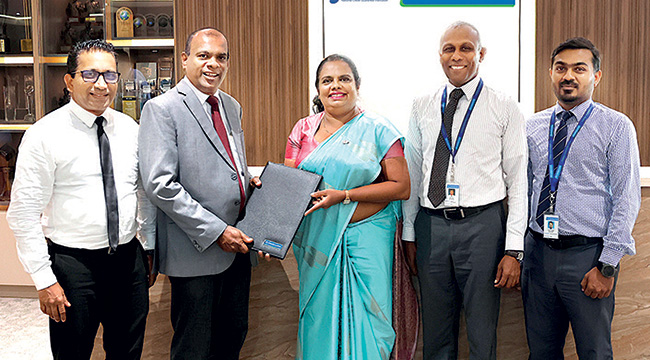
The Commercial Bank of Ceylon has reaffirmed its long-standing commitment to advancing women’s empowerment and financial inclusion, by partnering with the National Credit Guarantee Institution Limited (NCGIL) as a Participating Shareholder Institution (PSI) in the newly introduced ‘Liya Shakthi’ credit guarantee scheme, designed to support women-led enterprises across Sri Lanka.
The operational launch of the scheme was marked by the handover of the first loan registration at Commercial Bank’s Head Office recently, symbolising a key step in broadening access to finance for women entrepreneurs.
Representing Commercial Bank at the event were Mithila Shyamini, Assistant General Manager – Personal Banking, Malika De Silva, Senior Manager – Development Credit Department, and Chathura Dilshan, Executive Officer of the Department. The National Credit Guarantee Institution was represented by Jude Fernando, Chief Executive Officer, and Eranjana Chandradasa, Manager-Guarantee Administration.
‘Liya Shakthi’ is a credit guarantee product introduced by the NCGIL to facilitate greater access to financing for women-led Micro, Small, and Medium Enterprises (MSMEs) that possess viable business models and sound repayment capacity but lack adequate collateral to secure traditional bank loans. Through NCGIL’s credit guarantee mechanism, Commercial Bank will be able to extend credit to a wider segment of women entrepreneurs, furthering its mission to drive inclusive economic growth.
Business
Prima Group Sri Lanka supports national flood relief efforts with over Rs. 300 Mn in dry rations
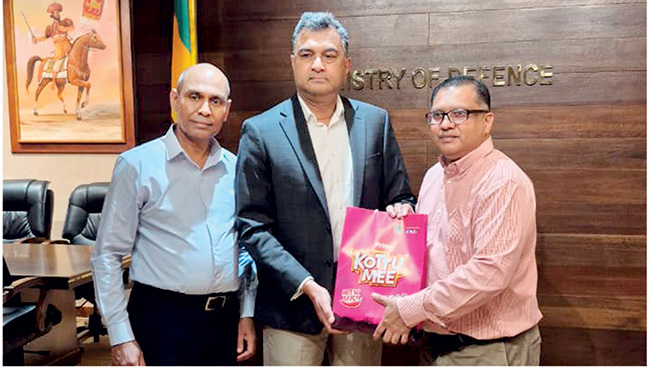
Prima Group Sri Lanka has pledged assistance valued at over Rs. 300 million, providing essential Prima food products to support communities affected by the recent floods across the island. This relief initiative is being coordinated through the Ministry of Defence to ensure the timely and effective distribution of aid to impacted families.
As part of this commitment, Prima Group Sri Lanka donated a significant stock of Prima dry rations to the Government of Sri Lanka on 30 November. The consignment will be distributed across multiple severely impacted districts. These supplies will support families facing disruptions to daily life, ensuring they receive assistance as recovery efforts continue.
The handover took place at the Ministry, where the donation was received by the Secretary of Defence, Air Vice Marshal (Retired) Sampath Thuyacontha. Representing Prima Group Sri Lanka, Sajith Gunaratne – General Manager of Ceylon Agro Industries Limited, and Sanjeeva Perera – General Manager of Ceylon Grain Elevators PLC, officially presented the donation.
Prima Group has been standing with the people of Sri Lanka for over 40 years, and this donation reflects its broader commitment to the nation during challenging times. As relief operations continue across the island, the company remains focused on helping families rebuild their lives and supporting the ongoing recovery process in collaboration with the Government Authorities.
-
News5 days ago
Lunuwila tragedy not caused by those videoing Bell 212: SLAF
-

 News4 days ago
News4 days agoLevel III landslide early warning continue to be in force in the districts of Kandy, Kegalle, Kurunegala and Matale
-

 Latest News6 days ago
Latest News6 days agoLevel III landslide early warnings issued to the districts of Badulla, Kandy, Kegalle, Kurunegala, Matale and Nuwara-Eliya
-

 Features6 days ago
Features6 days agoDitwah: An unusual cyclone
-

 Latest News7 days ago
Latest News7 days agoUpdated Payment Instructions for Disaster Relief Contributions
-

 News2 days ago
News2 days agoCPC delegation meets JVP for talks on disaster response
-

 Business2 days ago
Business2 days agoLOLC Finance Factoring powers business growth
-

 News2 days ago
News2 days agoA 6th Year Accolade: The Eternal Opulence of My Fair Lady


